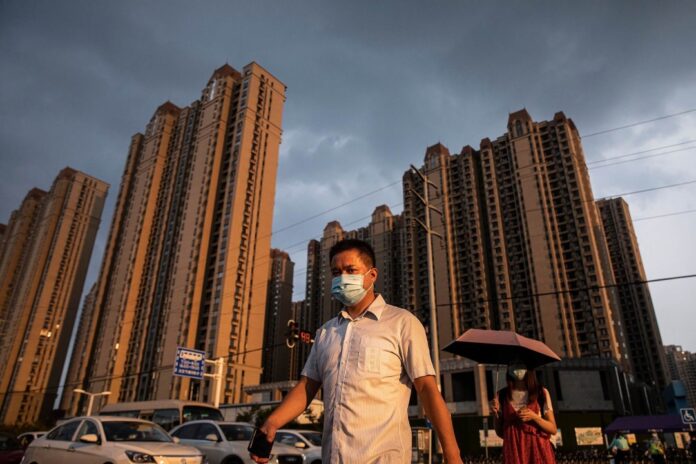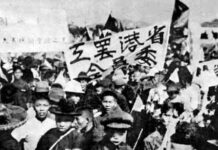Socialist magazine editorial part 3 (the first and second parts of this article series were published on 5 September and 8 September 2024)
“Perhaps even more difficult” than Japan in the 1990s – that is the verdict of Lu Ting, chief China economist at Japanese bank Nomura. He was speaking about China’s future arc of development as it grapples with a collapsed housing bubble. Japan has suffered more than three “lost decades” of low growth, rising debt and falling prices (deflation).
Lu was addressing an economic conference in Hainan province significantly themed: “How many years will we lose?” His comments serve to confirm the analysis made by Marxist website chinaworker.info that China’s version of ‘Japanification’ is likely to be worse than the original.
Lu highlighted some important differences between the two countries. One key difference, he said, is that China’s real estate meltdown impacts not only its biggest cities, but to an even greater extent the small and medium-sized cities. In China these are designated as tier 3, 4 and 5 cities. In 2021, the year China’s property bubble burst, 78 percent of total housing construction took place in tier 3 cities, according to a study by Kenneth Rogoff and Yuanchen Yang of the Stanford Center on China’s Economy and Institutions.
Many of these cities are now shrinking which aggravates the mismatch between excessive housing supply and weak demand. There are 71 tier 3 cities with a combined population of over 300 million. In 2021, these cities suffered a combined population loss of 2 percent (around six million people) in a single year.
Japan’s real estate bubble was mainly concentrated in its six largest metropolitan areas and applied mostly to the commercial property sector. By contrast, as Lu explained, China’s collapsed property bubble is manifested mainly in the residential sector. It is therefore much bigger and more directly impacts the population at large.
Crisis worsens
China’s property crisis has continued to worsen this year, defying predictions from global capitalist agencies and the CCP regime that it would stabilise. New construction starts fell 24 percent year-on-year in the first half of this year, following year-on-year declines of 21 percent in 2023 and 39 percent in 2022, according to the Financial Times.
A succession of new measures from the central government, including lower interest rates and looser controls – overturning many previous CCP policies – have made no impact. This includes a fund launched in May, worth 500 billion yuan, to enable local governments to buy up unsold houses and convert them into “affordable housing”. Figures released by the People’s Bank of China in August, show that only 24.7 billion yuan (less than 5 percent) has been used. Many local governments have shown zero interest in implementing this policy.
China’s house prices have not fallen as precipitously as Japan’s did, but this may now change. Japan’s property prices kept falling for 18 years. In China, local governments set price levels for new housing mostly sold on the ‘pre-sale’ model. This has slowed the nationwide price fall, which nevertheless has averaged 20 percent over the past three years according to Chen Long of Plenum, a research group.
However, as the CCP’s efforts to break the vicious circle become increasingly desperate, a new policy from August will see many local governments loosen price controls, which could spark much bigger declines. This latest policy zigzag has been forced on Beijing by market pressures. Last year, sales of second-hand homes, a less regulated sector where prices have fallen faster, exceeded the sales of new homes for the first time. By further reducing the market for new homes, this has aggravated the debt financing problems of the property companies, 80 of which have defaulted.
This debt pressure has forced Xi Jinping’s regime into a partial capitulation to market forces and deregulation. But loosening price controls could boomerang on the CCP and the property companies, making home buyers even more hesitant in the expectation that prices will fall further.
Imperialist tensions
A key point in Lu Ting’s speech addressed geopolitics – what we Marxists call the imperialist bloc conflict or New Cold War. The trade war Japan faced in the 1980s and 90s was a “relatively pure trade war” he said. It was an “era of rapid globalization” and geopolitical problems were “not serious”. Today, Chinese capitalism faces an unmistakably hostile environment. Japan could overcome protectionism from Western governments by building factories in the US, Europe and other places, Lu explained.
This option is extremely problematic for China as a result of US-led decoupling and containment policies, which continue to escalate. Chinese factories are largely blocked from setting up on US soil on “national security” grounds. They must turn instead to Southeast Asia and Latin America for offshore locations. But even these overseas Chinese factories are being targeted by the US government with trade sanctions.
The Bangkok Post (21 August) reported that Chinese-owned solar factories in Malaysia, Thailand and Vietnam are shutting down under the threat of US tariffs. Mexico recently got cold feet about welcoming Chinese automakers to set up in the country, despite one in three cars sold in Mexico now coming from China. This is under US pressure, insisting its own treaties with Mexico will not permit it to become “a backdoor to China”.




